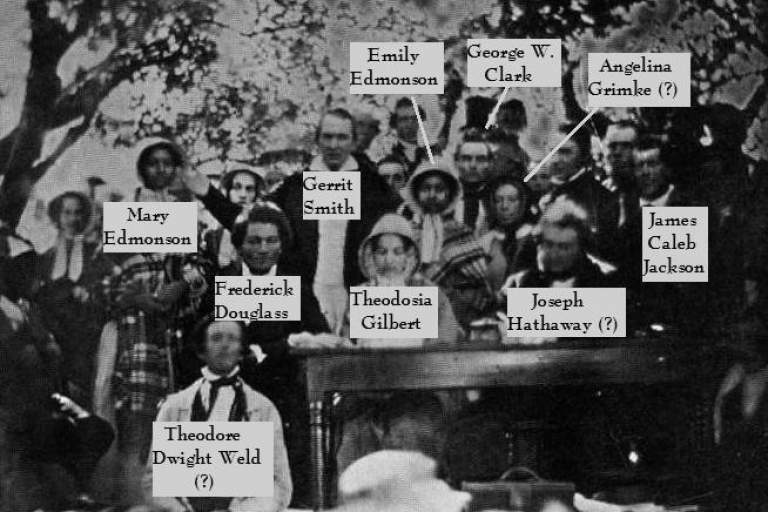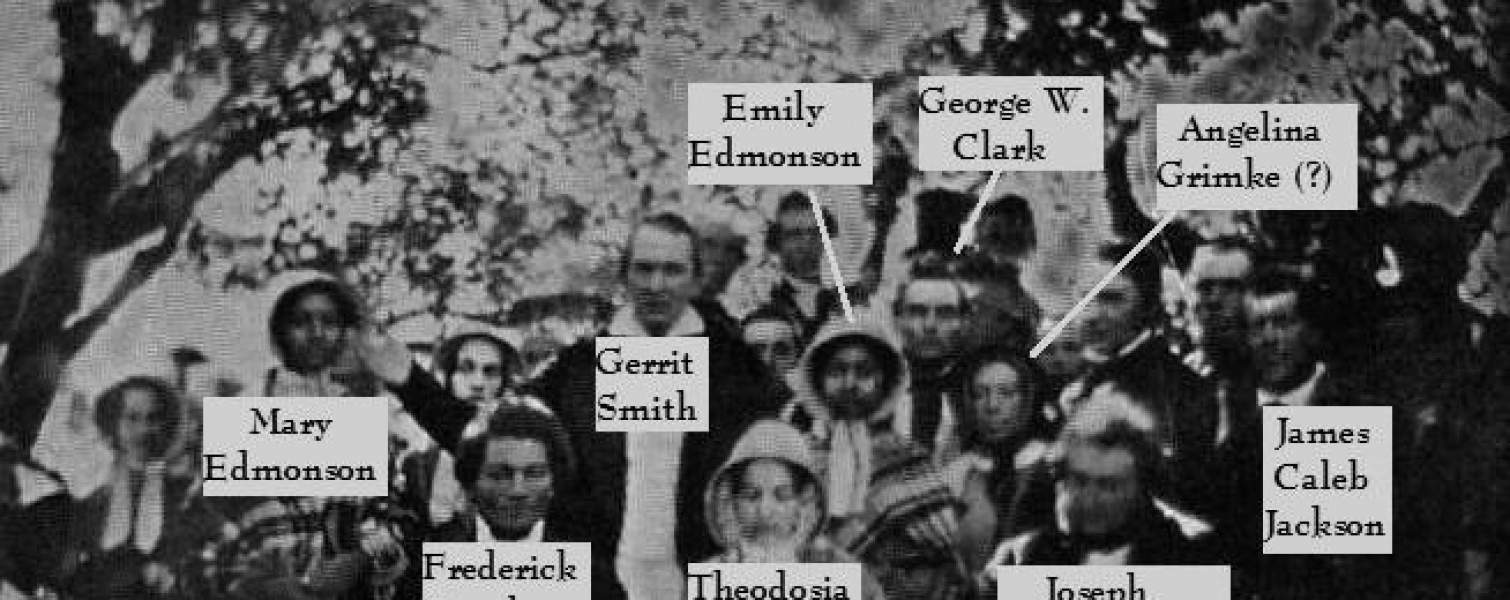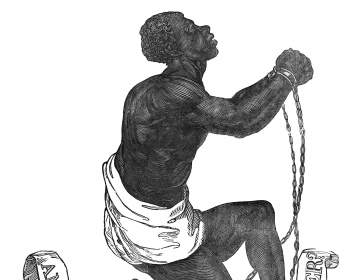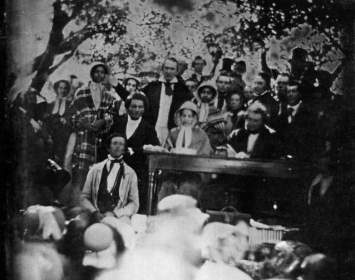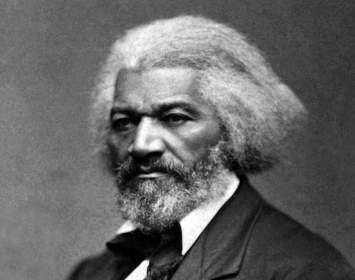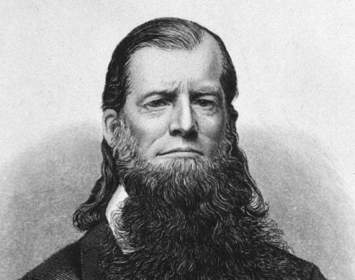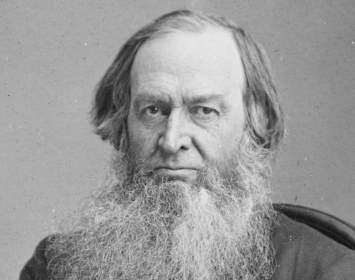In 1850, the U.S. Congress considered the controversial Fugitive Slave Law, which empowered the federal government to capture escaped slaves even in free states and obliged free-state residents to cooperate with apprehension efforts. (The measure passed on September 18, as part of the Compromise of 1850.) Outraged northern abolitionists held numerous protest conventions in anticipation of the law. The August 21–22, 1850, convention in Cazenovia is remarkable because of its high turnout relative to the size of the community, and because a Daguerrotype of convention leaders became a defining image of the northern abolition movement.
The Cazenovia convention was organized by Gerrit Smith in his capacity as president of the New York State Vigilance Committee. On August 21, proceedings were held at the Congregational Free Church on Lincklaen Street.
The building could not accommodate all desiring to attend, so on August 22, proceedings were moved to an apple orchard owned by Grace Wilson, a member of the Cazenovia Ladies Antislavery Society. Some 2,000 persons attended the convention’s second day—the same number of people as resided in Cazenovia at the time. The crowd was not altogether welcome in the relatively conservative community.
The Convention produced an open letter “To American Slaves from Those Who Have Fled from American Slavery,” advocating immediate abolition of slavery and condoning the use of violence in efforts to escape. It is widely believed that the letter was authored in whole or part by Smith. Many speakers and newspaper editors, even in the north, attacked the convention and the open letter as overly radical.
Convention participants included Frederick Douglass, who chaired the proceedings; Gerrit Smith; abolitionist and quack physician James Caleb Jackson; and the Edmonson sisters, former slaves from Washington, D.C. An estimated fifty fugitive slaves attended. During the second day’s proceedings at the apple orchard, pioneer photographer Ezra Greenleaf Weld, brother of the prominent abolitionist Theodore Weld, made a Daguerrotype of convention leaders that continued to be widely circulated even when the convention itself faded into history. (Larger images of the Daguerrotype are available here.)
Mere days later, Gerrit Smith conducted and Frederick Douglass spoke at a similar two-day convention held in Smith's native Peterboro. The exact dates are unknown, but the convention definitely occurred during August.
